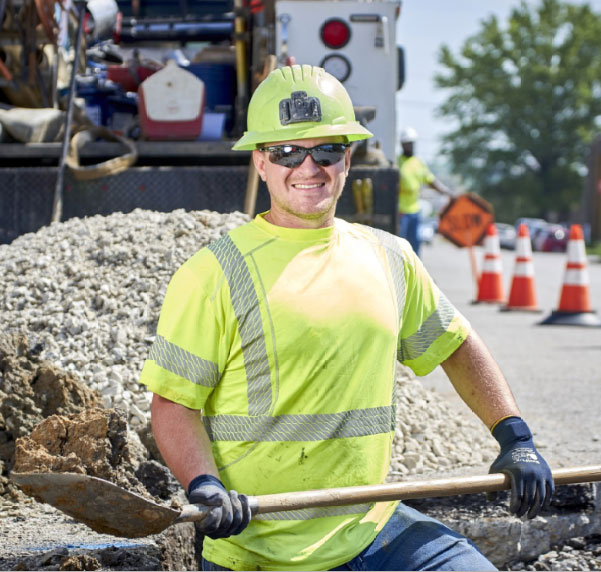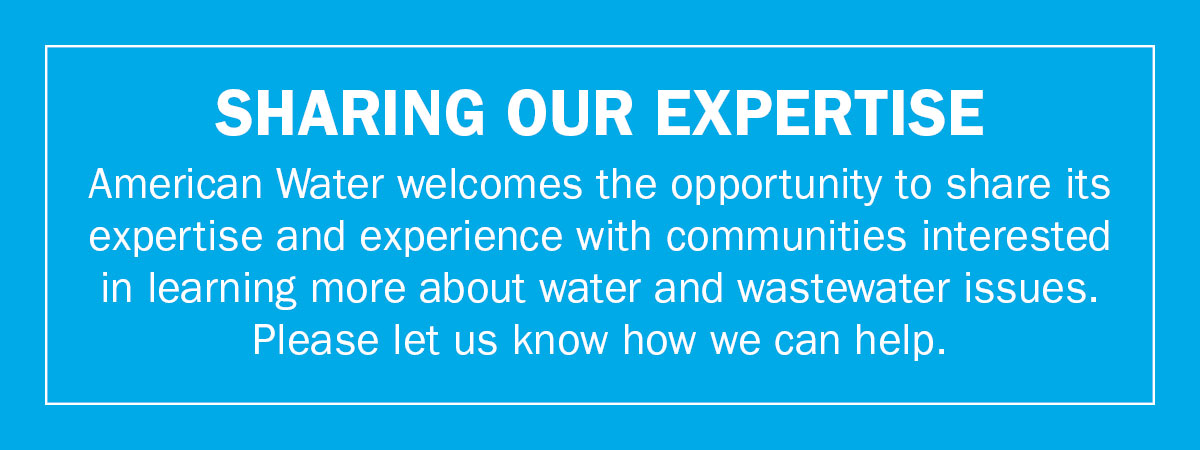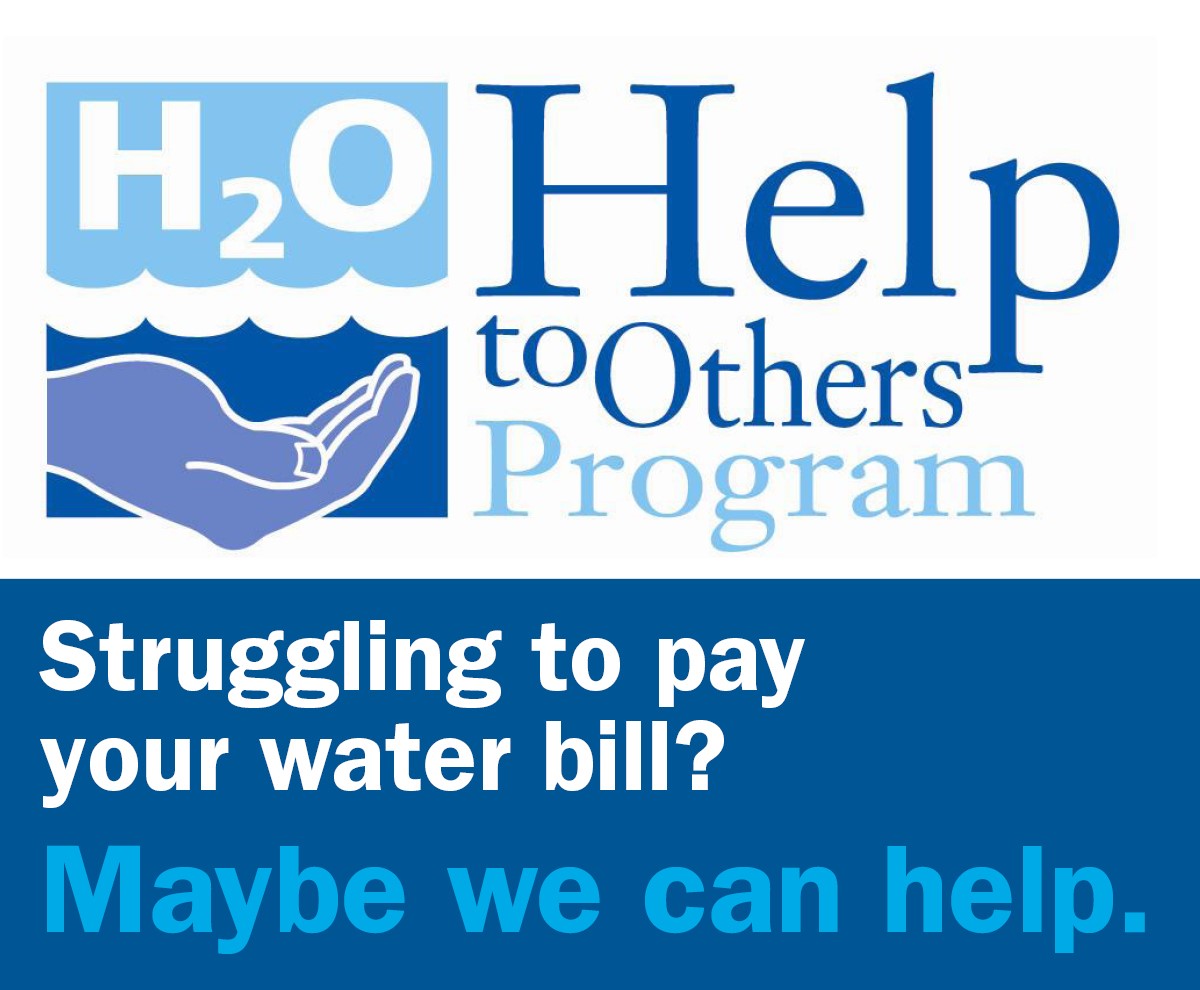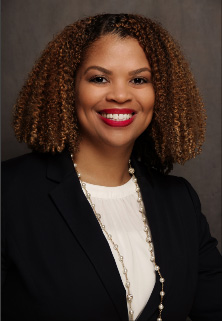Welcome to the Pipeline!
Welcome to the latest edition of American Water's the Pipeline, a quarterly resource for all things water. We see this as one more way to stay connected.
A Note from Val Armstrong
|
Spotlight: A Conversation with Deborah DegillioChief Customer Officer, American Water |
|||
|
Water Access and Affordability Solutions
Regulated utilities have developed and deployed a myriad of tools to help customers manage their water and wastewater bills; however, more can be done. Ultimately, programmatic and structural solutions are needed to effectively address affordability in the long term.
|
State-Funded Customer Assistance Programs
For years, states have funded and administered assistance programs for electric service customers. Now, we see states, like Illinois and California, step to the plate and offer similar programs for water and wastewater service customers.
- Illinois: In 2022, Illinois passed the Water and Sewer Financial Assistance Act. This law supported the creation of a water and sewer financial assistance program for qualifying residents. The state of Illinois appropriated $3 million in assistance for water and wastewater service. Water utility providers may begin opting into the program and declaring participation as early as July 1, 2022. The Illinois Department of Commerce & Economic Opportunity will administer the program and disburse funds to utilities during 2023.
- California: California’s Water and Wastewater Arrearage Payment Program provides federal funds directly to utilities for residential and commercial utility customers with accounts in arrears. The California State Legislature allocated $985 million in COVID-19 federal relief to fund the program and provided utility customers assistance during the pandemic, regardless of the customer’s income status. While commercial customers are eligible to participate, there are limitations on commercial customers who are eligible. As of June 2022, California American Water had allocated program funds to approximately 20,000 customers totaling $6.3 million.

Federally-Funded Customer Assistance Programs
For over 40 years, families could receive federal assistance with paying energy bills through the Low-Income Household Energy Assistance Program (LIHEAP). Until last year, there was no similar federal program to help customers pay for water and wastewater bills.
In 2021, Congress passed the American Rescue Plan Act, from which the Low-Income Household Water Assistance Program (LIHWAP) was born. LIHWAP is a federally funded assistance program that assists qualifying low-income households pay their water and wastewater bills. The program, housed within the Department of Health and Human Services, issues grants to states, territories, federally and state-recognized tribes and other entities on behalf of water and wastewater service customers. State agencies are then tasked with administering the program and distributing funds to the respective water and wastewater utilities of customers who qualify for the LIHWAP assistance.
Like many in the industry, American Water provides education and access to information for our customers regarding the LIHWAP program and its application process. LIHWAP has provided financial assistance to households nationwide. By way of example, Pennsylvania American Water is proud to partner and help its customers as the DHS has processed over 8,300 grants for American Water customers, totaling over $5 million. American Water celebrates the passage of LIHWAP and the positive impact the program is having in the lives and homes of our customers to help keep the water flowing.
Unfortunately, one limitation of LIHWAP is that it is currently a temporary program. American Water, and others in the industry, continues to advocate for a permanent federal solution to affordability that reaches vulnerable customers.
Company-Funded Assistance Programs
Many of American Water state operations have long offered affordability programs, such as the H2O - Help to Others Program, which provide relief to qualifying low-income households. These customer assistance programs vary by state in the form of grants, discounts, water saving devices and education. In addition, the company offers the following bill paying assistance programs to its customers:
- Deferred Payment Arrangements (DPA)
- Budget Billing
- Installment Plans
- Extensions of bill payment due date
Structural Solutions
Structural solutions are also a part of the equation to address affordability challenges for the long-term, including proactive capital investments and consolidation of fragmented water and wastewater systems.

Proactive Capital Investment
Catastrophic infrastructure failure is costly, but timely investment in infrastructure can help mitigate costs related to emergency repairs and improve service quality and reliability.
The American Society of Civil Engineers (ASCE) released its 2021 report card, which gave America’s water and wastewater infrastructure a C- D+ grade, respectively. These scores demonstrate the need for infrastructure investments that promote efficiency improvements, increase reliability, and balance affordability. Specifically, ASCE estimates more than $1 trillion in investment is needed over the next 25 years to replace aging infrastructure. Inadequate investment can result in water main breaks, water quality issues, and service disruptions. These events are not only costly, but they can put public health and safety at risk.
Over the next ten years, American Water plans to invest $28-$32 billion in water and wastewater system improvements. While American Water is making significant, it also acutely focuses on balancing investment opportunities with customer affordability.
Addressing Fragmentation
The water and wastewater sector remains highly fragmented. There are more than 50,000 community water systems and approximately 15,000 community wastewater systems in the United States. By comparison, there are approximately only 2,400 electric and 1,400 natural gas systems. A consequence of fragmentation is that infrastructure investment costs are often borne by a small number of customers.
Consolidation can help reduce rate shock through rate stabilization; mitigate costs through efficiencies and leveraging economies of scale and help prevent one small community and its customers from having to bear the full financial burden for major capital projects by spreading those costs over a larger customer base.
Regulated water utilities continue to seek regulatory approval to implement mechanisms that reduce regulatory lag, enable timely recovery of investments and extend the time between general rate cases filings — all helping mitigate the size of base rate increases and the impact these increases have on customers.
Resources
American Water wants to be a resource of information for you. Through active outreach and engagement with a variety of stakeholders, American Water has taken part in a great exchange of ideas, issues and insights about challenges and opportunities impacting the water and wastewater industry. Please do not hesitate to reach out to us on any water or wastewater topic. Here are just a few examples of resources that provide background on the topics we covered:
- Customer Assistance Programs: Overview of American Water's customer assistance programs.
- LIHWAP Grant Recipient Summary Profiles: This website provides summaries of information gathered from accepted LIHWAP implementation plans.
- Unpaid utility bills? California will pay $2 billion to stop shutoffs - CalMatters: This article explores affordability challenges in California and the state’s assistance programs.
- Report: Lack of Water Access Costs U.S. $8.6B Each Year: Highlights of this report are addressed in this June 2022 AP News article.
We're here if you need us.
|
|||







